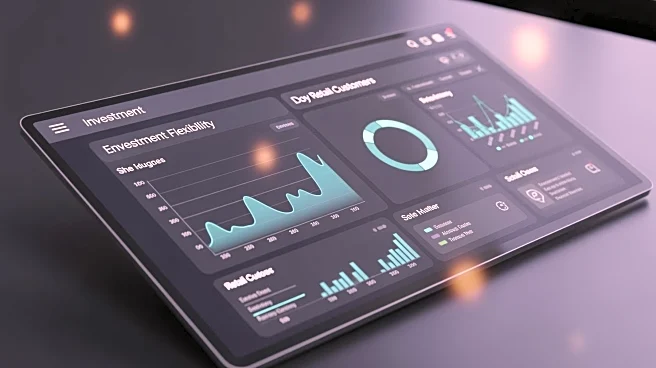What's Happening?
Vitality, a health insurer, has successfully increased its life insurance sales by 31% following the launch of a new marketing campaign. The campaign, which ran for five months, was designed to position
Vitality Life Insurance as a proactive tool for living a richer, longer life, rather than merely a compensation for death. This strategic shift was based on insights from a seven-year study of over 465,000 members, which indicated that engaged members could live up to five years longer. The campaign featured Vitality's mascot, Stanley the dachshund, in various advertisements, including TV, social media, and radio, promoting an active lifestyle. The initiative also empowered Vitality advisers with tools to enhance consumer conversations. As a result, brand consideration increased by five percentage points, and searches for the brand rose by 21%. Additionally, the cost per lead decreased by 19% due to effective social media strategies.
Why It's Important?
The success of Vitality's campaign highlights the impact of innovative marketing strategies in a highly commoditized life insurance market. By shifting the focus from price competition to promoting a healthier lifestyle, Vitality has differentiated itself from competitors and enhanced its brand image. This approach not only increased sales but also improved customer perception, with more individuals associating the brand with living healthier, longer lives. The campaign's effectiveness in reducing lead costs and increasing brand consideration demonstrates the potential for other insurers to adopt similar strategies to boost profitability and market share. Vitality's achievement in winning the 2025 Marketing Week Award for Excellence in Financial Services further underscores the significance of creative marketing in the financial sector.
What's Next?
Vitality's successful campaign may encourage other insurers to explore innovative marketing strategies that focus on lifestyle benefits rather than traditional price-based competition. The positive reception of Vitality's approach could lead to increased investment in research and development to identify unique selling points that resonate with consumers. Additionally, the insurance industry might see a shift towards more personalized and engaging marketing tactics that emphasize the value of living a healthier life. As Vitality continues to build on its campaign's success, it may further refine its strategies to maintain momentum and expand its market presence.
Beyond the Headlines
Vitality's campaign not only impacts the insurance industry but also reflects broader societal trends towards health and wellness. By promoting life insurance as a tool for living longer, healthier lives, Vitality taps into the growing consumer interest in proactive health management. This shift could influence other sectors, such as healthcare and fitness, to integrate similar lifestyle-focused messaging in their marketing efforts. The campaign also raises ethical considerations about the role of insurance in promoting public health and the potential for insurers to contribute positively to societal well-being.











